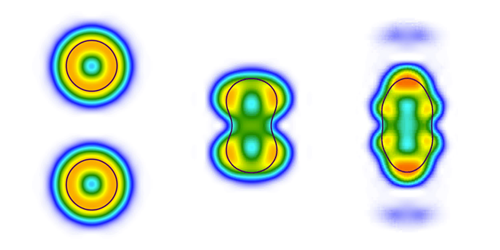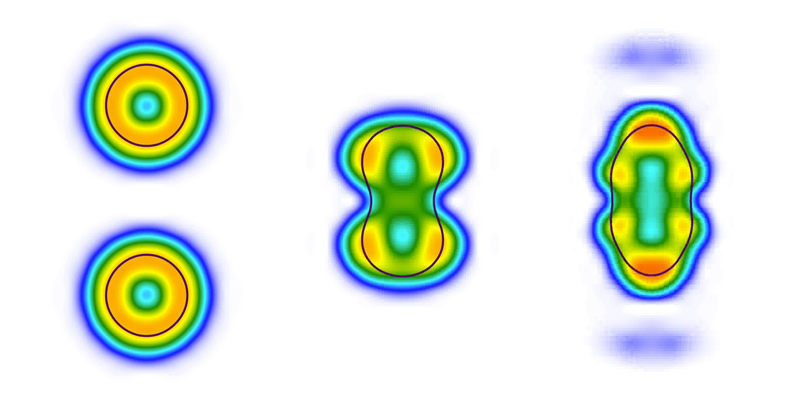Video—Nuclear Fusion in Hi-Def
When two nuclei collide with sufficient energy, they can temporarily fuse into a short-lived “pre-compound”—an excited-state nucleus that can later decay into a stable state or fall apart (through fission, for example). Researchers have now developed an improved theoretical approach for computing and analyzing the nuclear structures formed during this brief time. The new technique demonstrates that groups of protons and neutrons form temporary “clusters” corresponding to smaller, stable nuclei within the larger nucleus produced by the collision. Understanding the structure of this fleeting nuclear state is essential for deciphering many nuclear reactions—such as those in stars—that are often studied through nuclear collision experiments.
Previous theory and experiments have suggested that clusters exist within the pre-compound. Existing theoretical approaches, however, cannot reveal the detailed nature of such clusters. To address this problem, Bastian Schuetrumpf of the Technical University of Darmstadt in Germany and Witold Nazarewicz of Michigan State University in East Lansing borrowed a mathematical tool developed to describe electron arrangements within atoms and molecules and applied it to nucleons within an excited-state nucleus.
The researchers analyzed reactions triggered by collisions of various nuclei (oxygen, calcium, and carbon), which can result in either fusion or fission, depending on the collision energy. The calculations reveal clusters corresponding to the nuclei helium-4, carbon-12, magnesium-24, and argon-36. For example, two oxygen-16 nuclei colliding at an energy of 20 MeV form a pre-compound whose structure oscillates between two configurations. One arrangement contains two deformed carbon-12 clusters and the other combines those clusters with two alpha particles (helium-4 nuclei; see first animation). The model could also tackle more complicated asymmetric reactions involving different nuclei, such as the fission resulting from the pre-compound formed when calcium and oxygen collide at an energy of 300 MeV (second animation).
This research is published in Physical Review C.
–Matteo Rini
Matteo Rini is the Editor of Physics Magazine.





